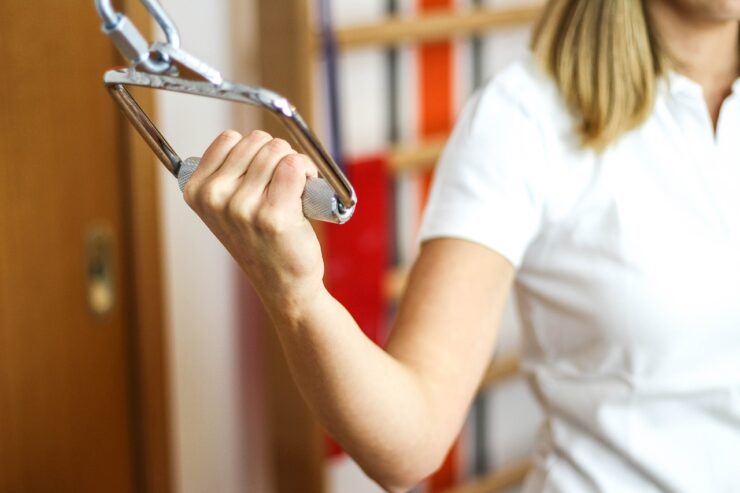What does rehabilitation mean? Rehabilitation is professional support, which refers both to help in restoring or maintaining physical and mental fitness. There are several types of rehabilitation, which differ in the methods of operation, purpose and target group. The type of interactions is selected depending on the individual needs of the patient in order to achieve the intended goals.
- https://www.sprezarki.net.pl/ile-gladzi-szpachlowej-potrzeba-na-1-m2/
- https://www.mistrzowiecoachingu.pl/inwestowanie-w-nieruchomosci-prosty-sposob-na-wzbogacenie
- https://www.linia.org.pl/detektyw-ile-kosztuje/
What are the types of rehabilitation?
Rehabilitation can be categorized by the type of disease or ailment it concerns, as well as the degree of its advancement. Therefore, we distinguish:
– home rehabilitation (as the name suggests, it takes place at the patient’s home),
– rehabilitation in outpatient conditions (medical examinations are performed without diagnostics, prescriptions and applications for orthopedic supplies are prescribed, results are verified),
– systemic in the conditions of an inpatient ward,
– neurological in the conditions of an inpatient ward (recommended for patients with neurological, neurosurgical, traumatic and orthopedic injuries. Treatments last from 3 to 6 weeks),
– pulmonary in the conditions of an inpatient ward (the aim is to inhibit the disease that affects lung capacity),
– specialist (recommended for patients who need special stimulation. It is also dedicated to visually impaired and blind patients, children with genetic defects and women after mastectomy).
What is home rehabilitation?
Home rehabilitation is one of the types. Support at home can be obtained under the National Health Fund. What is the course of classes like? The first meeting with the patient is a consultation visit, during which the physiotherapist conducts an interview and creates a specialist action plan based on it. During the interview, the so-called functional study. The specialist also asks a number of detailed questions about the disease entity. Home rehabilitation is as good and effective as that in clinics.
- filtry-przemyslowe.com.pl/filtry-do-przemyslu-i-produkcji/
- medycyna-estetyczna21.waw.pl
- rolety-24.waw.pl
The physiotherapist appears with the appropriate equipment and accessories that ensure efficient and correct performance of exercises, treatments and massages. At the end of the meeting, the patient signs a document in which he confirms the visit and the conduct of the classes. It turns out that using this form of support brings many benefits. which ones? The advantages are really many. First of all, it is a convenient form for people who cannot move on their own, so they cannot get to stationary classes. Home visits also ensure an individual approach to the patient, which is difficult to implement in a group.
Therefore, the time and attention that the physiotherapist devotes to the patient is directed only at him. In addition, the home is a safe environment for the patient, which makes it easier for him to take up certain tasks and challenges. The factor of embarrassment, which often arises in situations of participation in group activities, is minimized. Homework also reduces expenses related to commuting or overnight stays away from home. At the same time, this translates into time savings, and often also greater flexibility of deadlines.
Home rehabilitation is also chosen in the case of children. Thanks to the activities taking place in a familiar space, they are able to work intensively and effectively. They also experience lower levels of anxiety.
What elements of work make up rehabilitation?
Rehabilitation is a series of external influences and stimulations that perform various functions. Rehabilitation includes many impacts, including:
– kinesiotherapy. It is a method of therapy using movement, improving exercises and therapeutic gymnastics. Movement improves the fitness and efficiency of the body, but it should be adapted to the needs of a particular patient. The task of kinesitherapy is to fully remove motor disability,
– massage. Manual or mechanical stimulation of tissues consists primarily in stimulating blood circulation and metabolism. It also improves the functioning of muscles and joints. A special technique is lymphatic drainage, the purpose of which is to improve the flow of lymph, and thus remove toxins from the body and eliminate lymph stasis, which creates swelling and edema. Massage also has a relaxing and relaxing role,
– iontopherase. It is carried out by applying electrical stimuli that stimulate the nervous system, minimize pain and muscle tension, and stimulate metabolism,
– hydrotherapy is a therapy using water sprays,
– treatment with an electromagnetic field is based on the properties of the generated field. The resulting tension stimulates metabolic processes, relaxes muscles, relieves pain symptoms,
– local cryotherapy is a comprehensive therapy that is used in many areas. Firstly, it relaxes the body, secondly, it relieves tension and pain. In addition, it increases the overall condition. Everything is done thanks to the controlled freezing of individual body tissues. Low temperatures cause tensions to ease,
– balneotherapy is a treatment with water baths. It is a treatment consisting of various types of water treatments (e.g. inhalations, drinking mineral waters).








